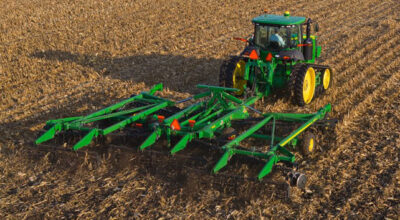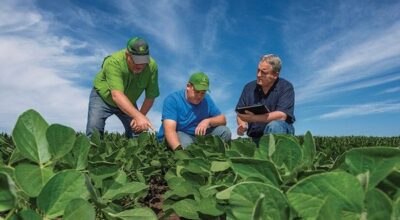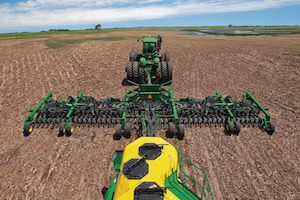As spring draws closer, farmers across the country are in the midst of preparing for their next planting season. Despite cold weather and, for many, the ongoing presence of snow, producers know that as soon as the climate allows for it, they will need to be out in their fields day in and day out to achieve high yields. Before heading out to the fields, however, farmers must first take certain factors into consideration, such as the crops they are going to plant, when they can actually sow their fields, and – critically – what spring planting equipment they are going to use.
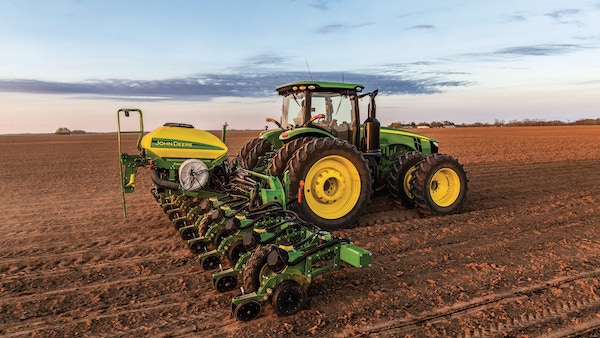
How to Effectively Prepare for the Spring Planting Season
Coming off the heels of winter, the spring planting season presents various hurdles that producers must overcome in order to be as successful as possible. While these factors can cause frustration and potentially lead to unwanted downtime, most farmers know that they come with the territory and cannot be avoided. This includes:
Excessive Soil Moisture / Flooding
While a bit of rain and moisture is great for crops as they grow, too much water prior to or during the spring planting season can create various problems. First off, extremely wet soil can cause tractors to get stuck as they roll through the field. This can lead to soil compaction, which can close off the paths that water flows through to reach the roots of the crop. And while some farmers may see tilling as an immediate solution to this problem, trying this on water-soaked soil can actually make the compaction worse. Because of this, it is recommended that producers delay deep tillage until after the harvesting period.
Soil Temperature
This past winter has not fallen short in regard to snowfall and cold weather. And while some may only consider the short-term impact here (i.e., snow removal), farmers are fully aware of how these factors can affect their work for months to come. Varying temperatures as we make our way out of winter and into spring can lead to uneven growing and crop emergence and can even cause a delay in the spring planting season. This is due to the fact that even if the top of the soil appears to be ready for seeding, the lower layers could still be frozen at, what should be, the time of planting.
Choosing the Right Crops for the Region
While it may seem obvious, determining which crops can actually grow in a specific area is a crucial step leading up to the spring planting season. Most producers tend to go with the same set of crops year in and year out, but what happens if a wrench is thrown in that plan? As stated above, there are various factors that can impact when farmers can get out in their fields to begin prepping for the planting season ahead. Considering this in conjunction with the short time span of which most crops can develop and thrive, producers should be aware of all of their options, even if they end up going through with their original plan.
What Kind of Crops Are Planted in Spring?
When deciding which crops to plant in their fields, farmers must look for those that will thrive in their specific region. That said, the list of crops that farmers can choose to grow in spring is broad. This includes:
- Barley (planting dates vary based on location, but typically fall between March and June)
- Corn (planting dates vary based on location, but typically fall between March and July)
- Cotton (planting dates vary based on location, but typically fall between April and June)
- Oat (planting dates vary based on location, but typically fall between March and June)
- Peanuts (planting dates vary based on location, but typically fall between April and July)
- Rice (planting dates vary based on location, but typically fall between April and June)
- Sorghum (planting dates vary based on location, but typically fall between March and July)
- Soybeans (planting dates vary based on location, but typically fall between May and July)
- Sugarbeets (planting dates vary based on location, but typically fall between March and May)
- Spring wheat (planting dates vary based on location, but typically fall between March and June)
By understanding the options that are available to them, producers can achieve higher yields come harvest season.
How to Achieve More Yields During the Spring Planting Season
When preparing for the spring planting season, farmers must also ensure they have the right equipment that can help them meet their goals. John Deere offers an entire portfolio that takes every producer into account, including the crops they grow, the topography of their land, and the size of their operation. No matter the operation, farmers can feel confident in the fact that John Deere planting equipment can help them get the job done right and find success this spring planting season.
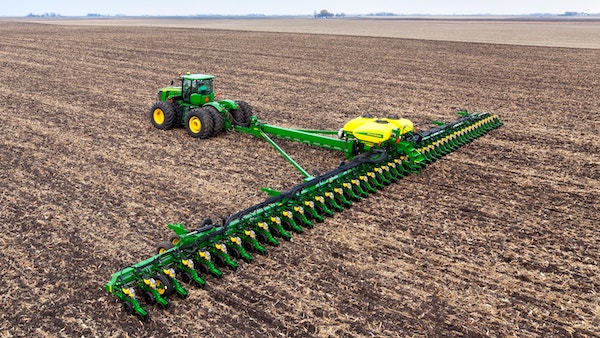
Categories of John Deere planting equipment include:
Drawn Planters
John Deere drawn planters are designed to help producers cover more acres with flexibility and productivity, even in no-till situations. Models include:
- 1775NT 12Row30
- 1775NT 16Row30
- 1775NT 24Row30
- 1795 12Row Split 23 or 24
- 1795 16Row Split 31 or 32
- 1795 24Row20
- 1745
- 1765 Flex
- 1765 Rigid
- 1765NT
- 1775 Flex
- 1755
- 1785
DB Planters
These John Deere planters can help farmers cover more acres in less time, thanks to the availability of ten configurations with widths ranging from 44 to 120 feet. Models include:
- DB44 24Row22
- DB60 24Row30
- DB60 24Row Split 47 or 48
- DB60 36Row20
- DB60 47Row15
- DB60T
- DB66 36Row22
- DB80 32Row30
- DB80 48Row20
- DB88 48Row22
- DB90 36Row30
- DB90 54Row20
- DB120 48Row30
Mounted Planters
Mounted planters from John Deere offer an affordable option for planting in conventional and reduced-till conditions. Models include:
DR Planters
The customizable DR planters from John Deere specialize in flexibility to meet the needs of any producer or their field. Models include:
Check out this post to see John Deere planting equipment in action!
John Deere ExactRate™ Liquid Fertilizer System
During the spring planting process, farmers everywhere understand the importance of being as meticulous as possible in order to achieve consistent crop growth. This need for uniformity across fields is the backbone of John Deere ExactRate, a factory-installed option that helps operators gain row-by-row section control. This control, in turn, helps reduce fertilizer costs and the amount of chemicals applied by shutting off application in areas of overlap or non-application.
Want to learn more about this offering from John Deere? Watch the video below!
Performance Upgrade Kits for John Deere Planters
Throughout the spring planting season, farmers spend an exorbitant amount of time out in the field with their equipment. Like anything, continued use of this machinery can cause it to wear out and become less effective. While some choose to move on and purchase new equipment, this isn’t always an option for some.
With John Deere Performance Upgrade Kits, operators can enjoy the latest in John Deere technology without having to purchase a brand new piece of equipment, which can often be expensive. This can be especially beneficial for operators who want specific performance offerings but cannot, or do not want to, invest in a new piece of equipment. By choosing specific add-ons, farmers can maximize efficiency throughout the planting season while also getting the most out of their tried and tested equipment. In addition to saving money, farmers who choose to upgrade their planters will not be impacted by the learning curve as much as they would be if they were to buy a brand new machine. Because they are already familiar with the machine in question, they can ensure maximum uptime and efficiency while getting ready for, or working through, the planting season. For those who are not ready to bid farewell to their trusty planter, performance upgrades are the perfect option to maximize its potential in a cost-effective manner.
Spring Planting with John Deere
As winter winds down and spring approaches, farmers across the country are getting ready to take to their fields and officially kick off the planting season. And while there may be challenges along the way, with the right strategy and equipment on their side, they can achieve high yields this spring planting season.
If you have any questions about the John Deere planting equipment, you can contact your local John Deere dealer.
If you enjoyed this post or want to read others, feel free to connect with us on Facebook, Pinterest, Twitter, or Instagram!
